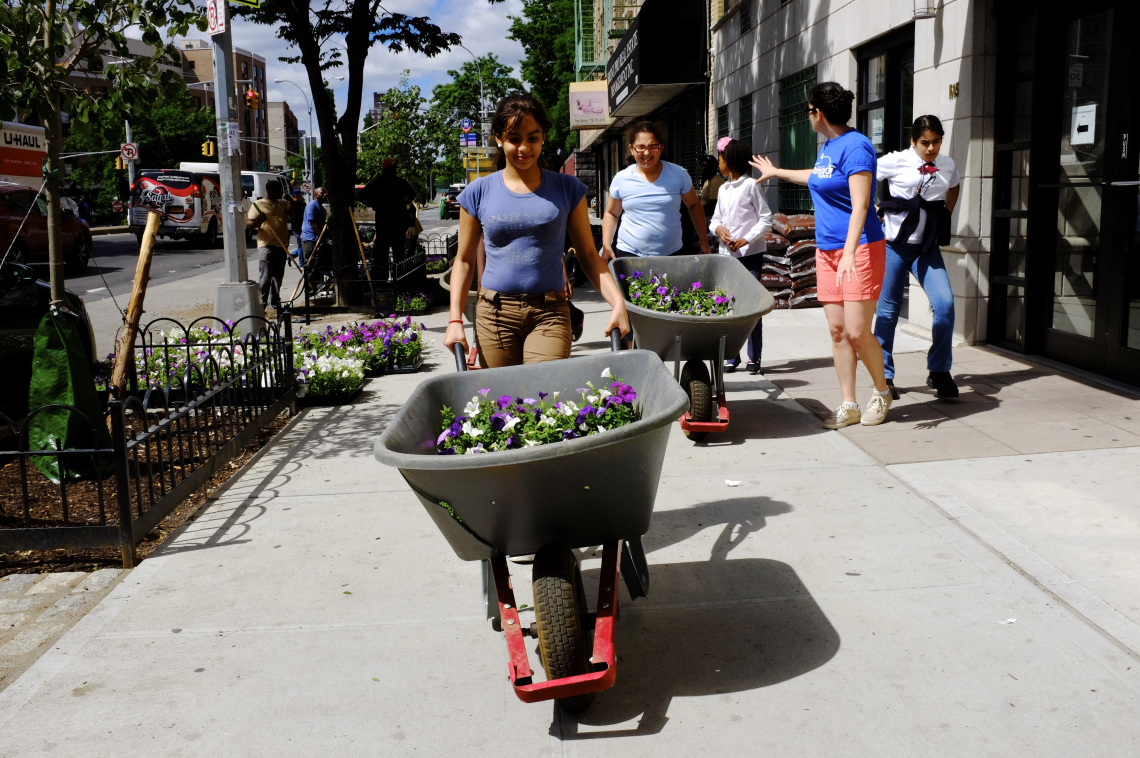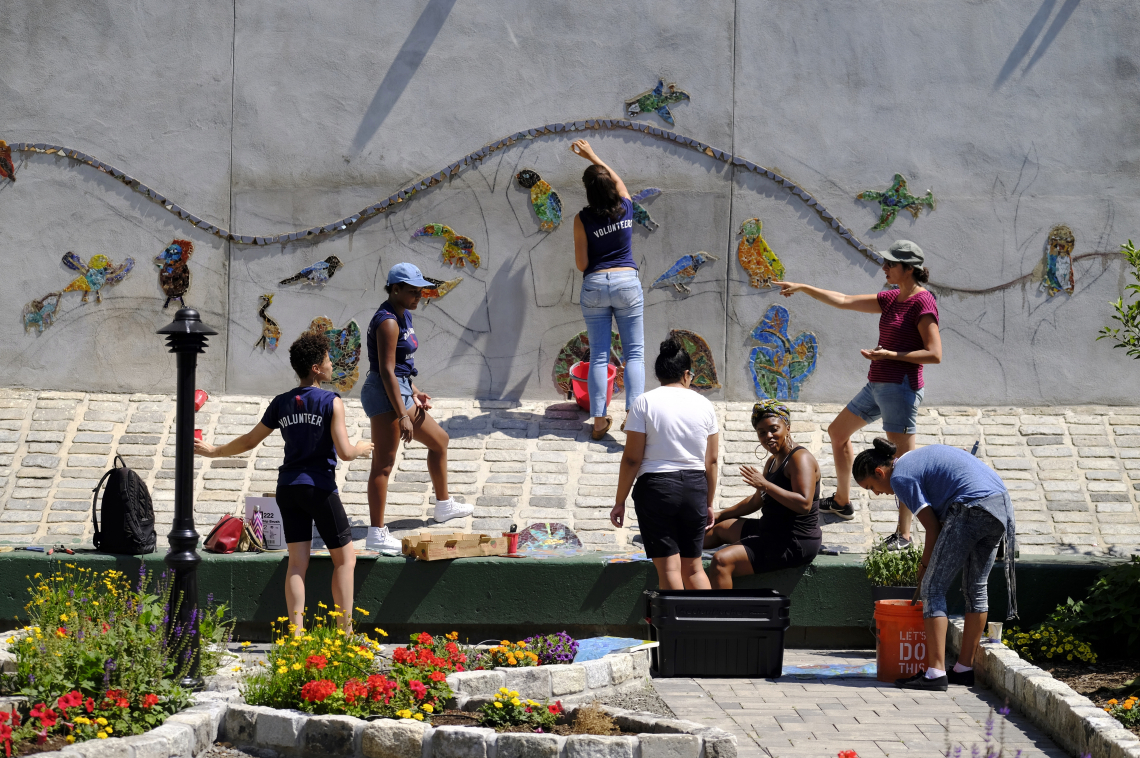

“Who are the people in your neighborhood?” This might seem like a simple question, but it can serve as a launchpad for community innovation. Who are the people in your neighborhood? How can you come together to make the neighborhood that much better? In the borough our organization DreamYard calls home, we’ve found that the people who live, work and learn here in the Bronx share our vision for a thriving, prosperous community. Nestled in a single city block you can find a public school, supermarket and bank, flanked by several small, family-owned businesses that reside under large residential apartment buildings. When you create opportunities that unite and mobilize those people and places toward a common goal, you can truly realize the power of community.
At DreamYard, our proverbial neighborhood includes a long list of partners in social services, business, and cultural institutions -big and small- all overflowing in abundance with one of the most invaluable resources: human capital. Our creative placemaking model expands the scope of possibility for our community partners by providing access to the resources of private industries and networks. Through our Community Investment Grants platform, public school and community partners can apply for support to execute place-based creative placemaking projects, enabling DreamYard to match the people power and resources from our corporate partners to the projects identified as most important by our community.
Improving and revitalizing community spaces
At the start of each calendar year, DreamYard partner schools and community-based organizations are invited to submit projects to improve and revitalize their learning and community spaces. After reviewing the scope and estimated budget parameters, DreamYard matches one or more of our partners whose resources and goals for engagement are most closely aligned to the proposed project. Once a match is made, our team moves into the planning and execution phase of project management, collaborating with our public and private partners to bring the proposed community vision to life.
For one of our 2018 Community Investment Grant projects, an elementary school wanted to reimagine a library that was being used as an outdated multi-purpose space. With the guidance of a full-service design firm who offered a pro-bono team of support, the school community was led through a human-centered design process from which the new vision, layout and color palette was created. Volunteers from a local service-oriented veterans organization worked alongside parents and school administrators to prep the space for its’ transformation day while our corporate partner provided funding for supplies as well as additional people-power. Corporate volunteers, alongside community volunteers completed a Bronx-inspired mural, assembled new furniture, and repainted the entire 2,500 square foot space, creating a vibrant, inspiring new learning center.
Sustainable engines for community development
These projects have become a sustainable engine for community development by gathering and pooling the collective resources of passionate people from across the private and public sector under the umbrella of shared values and purpose and amplifying social cohesion. Every stakeholder involved in a project has a vested interest in seeing this community grow and thrive. By putting the community’s needs first, and expanding the idea of what skills-based volunteering can be, place-based projects become more sustainable, impactful, and authentic.
Beyond project-based improvements, the partnerships formed through the Community Investment Grants with private industry leaders in community development, city agencies, local community based organizations, and vision-aligned employers can also be a catalyst for economic and workforce development, ultimately leading to job creation and local economic growth. When the relationships between employers and communities are cultivated and scaffolded, we can build equitable pathways to careers, identifying opportunities for future employment and supporting our next generation of neighborhood leaders as they navigate these paths.
When you step outside the door of your organization, who and what are the people and institutions that help your neighborhood survive and thrive? What are the values and goals they are hoping to achieve that align with your own organization’s mission? The most sustainable and equitable form of community development and creative placemaking is that which is driven by the community itself. Creating the space and opportunity for collaborative work to happen between public and private industry can ultimately lead to a more unified network of social change agents and economic catalysts, moving us all towards neighborhoods built on a foundation of social capital, access, and equity for all.





